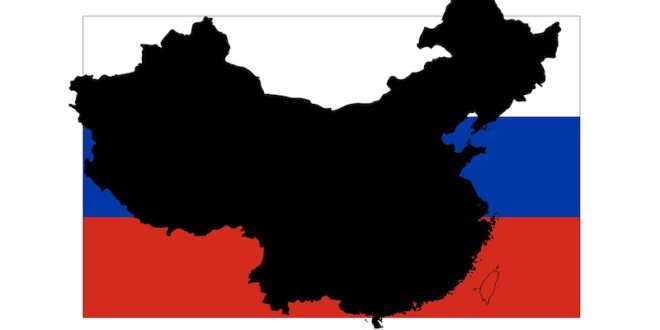On 31 March 2023, Russia published its new Foreign Policy Concept. Rapid growth in Asia has fuelled Russia’s drift toward the East and the pivot has now been integrated into official policy. This is a tectonic shift for Russia domestically but the material effects in Asia will be felt gradually.
Russia lists global regions in order of priority in the Foreign Policy Concept. The West has been relegated to penultimate priority before the Antarctic, which signals a 180-degree flip. Moscow asserts its desire for ‘peaceful coexistence’ but the ball is in the West’s court.
Russia’s first strategic priority after states of the former Soviet Union is the Arctic region. It is only now bringing its plans for the North Sea Route out of the cold. Russia’s moves in the North Sea will have a direct effect on logistics from China, easing its geo-economic difficulties and allowing more efficient transit of goods via Southeast Asia. The Arctic is also a confrontation point with circumpolar states, which will likely further delay thawing of relations with the West.
While seeking ‘peaceful coexistence’, Russia does not see a detente with the United States and other Western states in the foreseeable future. This sentiment is illustrated by high-ranking officials including Deputy Secretary of the Security Council, Dmitry Medvedev.
Russia’s Foreign Policy Concept lists China and India as its first and second priority relationships with Southeast Asia as its third. China’s importance is obvious, deep and enduring. So is India’s, considering the tight relationship between Moscow and New Delhi since India’s independence. The long history of cooperation in the military and economic spheres has created significant institutions of cooperation — for example, the joint missile programme Brahmos requires deep mutual trust throughout the verticals of government.
Crowded out of global fora, Russia is reprioritising its relations with regional organisations such as ASEAN going forward, juxtaposing them with Western-dominated groupings including the Quad, Chip4 and AUKUS. The strategy may resonate with Chinese policymakers and roughly half of Southeast Asian decision-makers. The interest expressed towards joining the BRICS format by 19 states, mostly from the ‘Global South’, is evidence that Russia’s bet on non-global decision-making fora can be a winning strategy.
Russia’s foreign policy strategy places economics first. Russia is shifting its economic attention to Asia and will likely concentrate on the rapidly growing nations of Southeast Asia. Russia–Asia links began to develop long before Russia’s official pivot to greater focus on Asia and prior to the hostilities between Russia and Europe. Links include the ‘Power of Siberia’ pipelines, increases to the Trans-Siberian railway’s capacity and rejuvenation of the North–South Transport Corridor into Iran.
Frequent references to infrastructure projects now pepper Moscow’s strategy. New market access initiatives in sectors where Russia has an advantage or is on par with the West should be expected. Some of these market initiatives are already visible — for example, India contracted Russia’s Transmashholding corporation in April 2023 to producetrains.
Russian energy, commodities and niche specialities like nuclear technology may be a boon to energy-poor but relatively cash-strapped Southeast Asian states. India becoming one of Russia’s major oil customers is a case in point.
While Russia has no state ideology, its many peoples have long been traditional and conservative. Russia has found itself the de facto defender of thought that is seen as reactionary in the West. As Western values evolve, Western countries find themselves distancing from the ‘Global South’. Russia, in contrast, is moving closer to its southern counterparts and has now made ‘traditional spiritual and moral values’ part of its foreign policy.
This is a significant shift after three decades without explicit value-led foreign policy. Russia will likely use the soft power of tradition to pave the way for market access through press and diplomatic campaigns. In Moscow’s eyes, Russia’s success in Africa shows that backing primary exports by bolstering traditionalist governments is a functional foreign policy model.
Since the first Far Eastern Economic Forum in 2015, Russia has been taking steps to increase capacity, interest and opportunities with Asia. Changes in education, social attitudes and business relationships have laid the groundwork for the pivot that Moscow has now put in writing.
Economies in Southeast Asia are growing and so are potential markets for Russian exports. Russia’s turn to the East is a long time coming and not the effect of conflict in Europe. The lack of sanctions toward Russia from most Asian states is an advantage and Moscow’s strategy maintains that current negative perceptions toward Russia may yet be overturned to facilitate increased cooperation.
Russia’s foreign policy structure is compatible with China’s Global Civilisational Initiative — both argue for multipolarity in international relations, the importance of resisting hegemony and the need to respect different civilisations.
Compatibility between Russia and China may have a multiplier effect on multipolarity. The entente between Beijing and Moscow in Africa and the Middle East sets a precedent for Asia. Russian and Chinese resources and industry may yet prove mutually reinforcing in Asia.
Despite Moscow’s intentions, Russia’s presence in Asia has been low. But Russia has been laying the groundwork for the pivot for over a decade and Asia is becoming even more vital. Russia’s shift toward Asia may be gradual, taking place in a select range of sectors and focusing on a limited number of countries to start with — but the direction has been set.
 Eurasia Press & News
Eurasia Press & News


